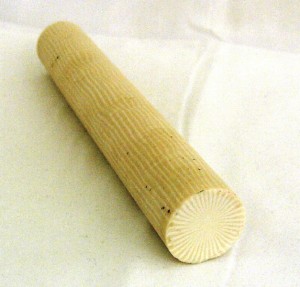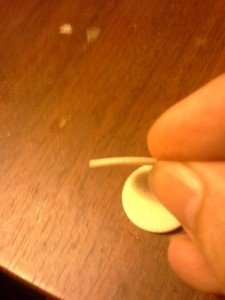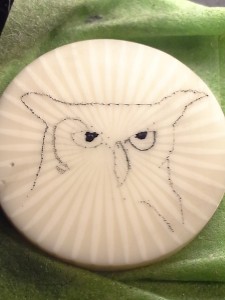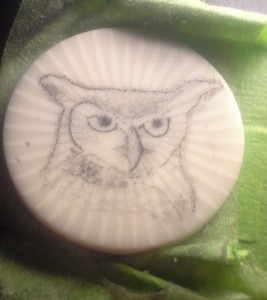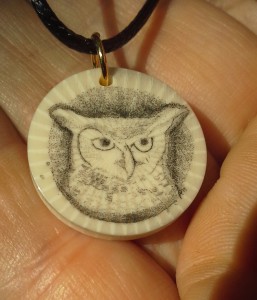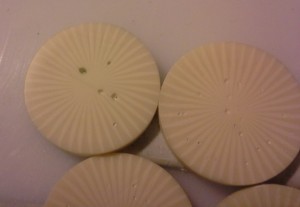We have been very busy with work, so much so that I haven’t had much time to scrimshaw – which is hard on me in a number of ways at this time of year. I have been able to create some Christmas gifts that I still need to wrap, and I’ve been able to sell some of the blank ivory alternative ivory bookmarks at our Paul’s Sugar House where local artisans sell their wares this time of year (hard not to spend any profits on all the wonderful artwork, pottery, ornaments, etc. there!)
In the upcoming newsletter I’ll be sharing my findings working with deer antler. I’d happened on someone who works for the highway department nearby who had some extras, so I’ll be setting about sanding some of the tips down and polishing them to scrimshaw.
 Jason Webb has been busy too, with his latest scrimshaw on pre-embargo elephant ivory which is to the right. Several other scrimshanders have been busy too, and if you’d like a mention, let me know – I’ll squeeze you in when I can. Jason’s page is in chronological order, so if you scroll to the very bottom you can click on the pictures there to see nice hi-resolution images
Jason Webb has been busy too, with his latest scrimshaw on pre-embargo elephant ivory which is to the right. Several other scrimshanders have been busy too, and if you’d like a mention, let me know – I’ll squeeze you in when I can. Jason’s page is in chronological order, so if you scroll to the very bottom you can click on the pictures there to see nice hi-resolution images
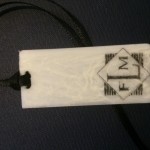
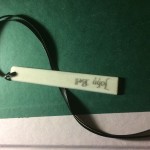
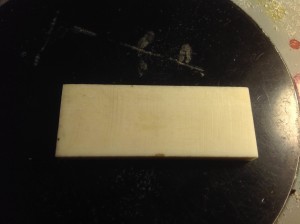
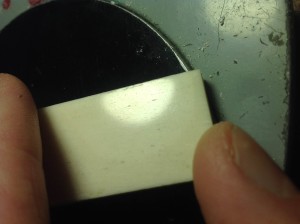
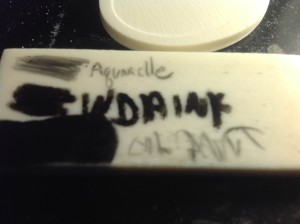
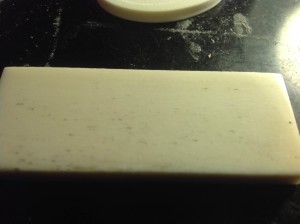
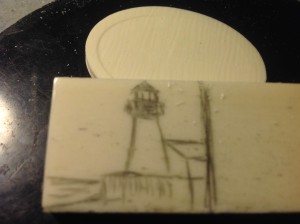
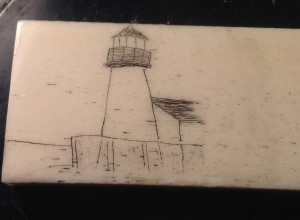
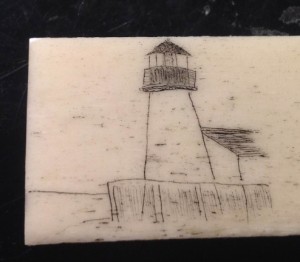

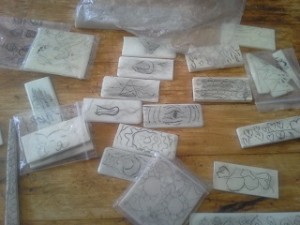 My set of keys have been used by my industrious daughter to create a bagful of her own scrimshaw, and she has had a great time working with it. She also found my other material including some very nice mammoth ivory which now has her beginning scrimshaw art carefully tucked away, since she created them and presented them to me for my birthday. Can’t get angry for that, it was a thoughtful idea, and I wouldn’t sand them down if they were the last pieces of mammoth ivory on earth.
My set of keys have been used by my industrious daughter to create a bagful of her own scrimshaw, and she has had a great time working with it. She also found my other material including some very nice mammoth ivory which now has her beginning scrimshaw art carefully tucked away, since she created them and presented them to me for my birthday. Can’t get angry for that, it was a thoughtful idea, and I wouldn’t sand them down if they were the last pieces of mammoth ivory on earth.